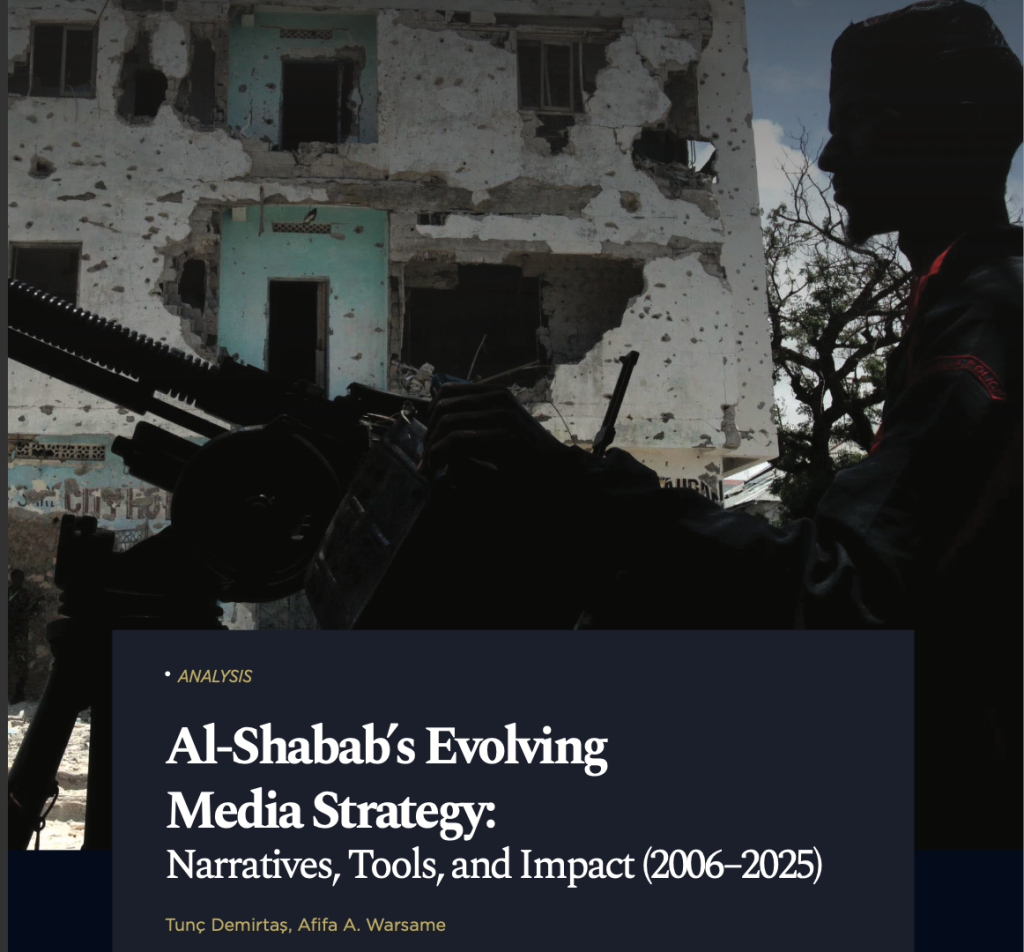Al-Shabab, Somalia’s most notorious terrorist group, has spent nearly two decades refining its media strategy into a full-fledged psychological weapon. From distributing cassette sermons in rural mosques in 2006 to launching AI-aided propaganda campaigns in 2025, the group’s communication tactics have evolved as aggressively as its military operations. This shift has made Al-Shabab not only a battlefield threat but also a powerful force in the digital arena.
A new report published in April 2025 by the SETA Foundation analyzes how Al-Shabab’s media tools have grown more deceptive, multilingual, and emotionally manipulative. Originally relying on traditional forms like radio stations and USB flash drives, the group now leverages encrypted platforms such as Telegram, Twitter, and dark web forums to spread its ideology and disinformation. These tools have allowed the group to bypass global moderation efforts and remain deeply embedded in online spaces.
One of the report’s key revelations is Al-Shabab’s use of ‘soft propaganda’—targeted media campaigns designed to appeal to women and youth without using overt militant language. These messages often present the group as defenders of Somali culture and Islam, subtly twisting historical grievances and anti-Western narratives to gain sympathy from vulnerable audiences.
The research also shows how the group deploys fake social media accounts, including civilian-appearing and female profiles, to share extremist narratives and discredit the Federal Government of Somalia (FGS). This disinformation strategy aims to erode public trust in official institutions and portray Al-Shabab as the more consistent and reliable authority in the regions it controls.
In recent years, Al-Shabab has also weaponized media during attacks, sometimes releasing videos or graphic images within hours of an operation. These releases are strategically timed to provoke fear, shape public perception, and overshadow government messaging. Analysts warn that the Somali state often responds too slowly to such information warfare.
Importantly, the report outlines how Al-Shabab now uses artificial intelligence and algorithmic techniques to amplify content, manipulate user engagement, and evade detection. These methods help the group mimic organic civilian opinions, creating the illusion of widespread public support for its cause—even in areas under federal control.
The authors argue that Somalia’s counterterrorism strategy must incorporate a rapid-response communications capability. Government agencies need to release credible information immediately after attacks to preempt Al-Shabab’s narrative. Delayed or incomplete messaging allows disinformation to take root and influence domestic and international audiences.
Community involvement is also critical. The report recommends that the FGS strengthen its partnerships with religious leaders, civil society groups, and diaspora communities to dismantle the ideological roots of extremism. Programs should empower local influencers and imams to provide alternative narratives grounded in Islamic values and national unity.
The international community, particularly social media companies and digital rights organizations, must also support Somalia’s fight against online extremism. Cross-border cooperation is essential to monitor, flag, and remove content that glorifies terrorism or spreads incitement to violence. The role of the Somali diaspora in countries like the U.S., UK, and Turkey is especially important in this regard.
Ultimately, the battle against Al-Shabab is no longer just about territory—it’s about truth, trust, and timing. The Somali government, with the backing of international partners, must take digital influence operations as seriously as physical insurgency. Winning the information war is essential to preserving Somalia’s sovereignty, restoring peace, and defending democracy.

